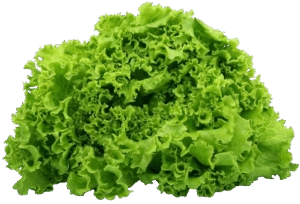TABLE OF CONTENTS
Rice, particularly white rice, reportedly accounts for most of the carbohydrate intake, globally. This is due to many factors, such as, it is often lower in cost, easily accessible and very simple to prepare. This grain is also a staple of many countries, especially in Asia (Liu et al. 2018; Fukagawa and Ziska, 2019).
In Jamaica, white rice is consumed by many daily. This is because it is a large part of many lunch and dinner menus, from the upscale restaurants to the tuck shop on the corner. However, studies have confirmed that white rice, especially when consumed in large amounts regularly, can increase one’s risk of developing type-2 diabetes as well as cardiovascular diseases. But, does it have any benefits? Let’s discuss!
The Discussion
There are four (4) parts of a rice grain – the hull (husk), the bran, the white rice (endosperm) and the germ (Panahabadi et al. 2021). As such, white (Polished/milled) rice, is rice that has had its husk, bran and germ removed, leaving the starchy endosperm (white rice itself), which is the part of the rice that is mostly consumed. White rice may also go through a process called – polishing, which gives the grains a nice, shiny white colour (Fukagawa and Ziska, 2019). These processes allow white rice to cook faster than most other types of rice, particularly, brown rice.
However, it has less nutritional value as most of the nutrients have been stripped or polished away. Additionally, white rice is considered a high glycemic refined grain, which has a high glycemic load, as such, it can cause spikes in blood sugar (Reynolds et al. 2019; Hu et al. 2020, Wu et al. 2020, etc.). Epidemiological studies have linked white rice and other refined grains, to a higher risk of type-2 diabetes (Reynolds et al. 2019; Hu et al. 2020).
According to research, rice constitutes about 20% of the world’s caloric intake (FAO Food and Nutrition Division, 2004), especially in Asian and South American populations (i.e. China, India, Japan, etc.), as it is often eaten as a main staple (International Diabetes Federation, 2019). As such, studies have shown a positive link between white rice consumption and an increase in type-2 diabetes among these populations (Asian) (Hu et al. 2012; Ren et al. 2021).
However, some studies have shown no association between the consumption of white rice and type-2 diabetes among the Chinese population when compared to other populations in South Asia (Bhavadharini et al. 2020). This according to the research, may be due in part to the fact that the Chinese diet usually contains eating white rice with other foods such as vegetables, meat, and seafood, which may have helped to reduce the glycemic load (Bhavadharini et al. 2020).
In this article, we will be exploring the nutritional value of white rice, if any, the effects of white rice and the risk of diabetes and cardiovascular disease. The article will also explore alternatives to white rice, which research suggests may positively impact one’s health.
Is White Rice Healthy For You?
- Nutritional value of white rice.
- White rice and diabetes risk.
- White rice and cardiovascular disease risk.
What is the Nutritional Value of White Rice?
Rice in general is reportedly a good source of both vitamins and minerals. Some of the minerals contained in rice include magnesium, manganese, selenium, iron, phosphorus, etc. It also contains vitamins such as folic acid, thiamin (vitamin B1), and niacin (vitamin B3) (Fukagawa and Ziska, 2019). However, since white rice is stripped of its outer bran and germ layers, most of the nutrients are lost, especially its fiber, polyphenols, and antioxidants (Wu et al. 2020; Neuenschwander et al. 2019, etc.).
As such, it is considered low in many essential vitamins, minerals and other nutrients, even fatty acids. Nonetheless, research contends that it can still be considered part of a healthy diet if consumed in moderation and in combination with whole grains, vegetables, and a wholesome healthy diet.
White Rice and Diabetes Risk
Diabetes is reportedly becoming a global burden. In fact, more than Four Hundred (400) million people globally have diabetes, with the number expected to increase significantly by the year, 2045 (Zimmet et al. 2001). China and India, which consume rice as a major staple, are said to top the list of countries with the most cases of diabetes (Uusitupa et al. 2019). Nonetheless, low, and middle-income economies are not far behind due to factors such as lifestyle, not being physically active, urbanization in some cases, as well as other economic factors (Saeedi et al. 2019; Malik et al. 2013). As such, Jamaica is no exception.
Research has shown that the high consumption of white rice, especially regularly, may increase one’s risk of diabetes, especially, if not consumed with other healthy grains and an overall wholesome diet. This was observed in a large 2012 study by a group of researchers with over Three Hundred Fifty Thousand (350,000) participants in four (4) countries – China, Japan, Australia, and the United States. (Hu et al (2012). The participants of the study were persons between the ages of Four (4) and Twenty-two (22) years.
The study found that participants who had 3-4 servings of rice per day were One and a half times (1.5) times more likely to develop diabetes than those who consumed less rice. Additionally, the research showed that a person’s diabetes risk increased with every extra bowl of white rice consumed. However, these results were observed more in participants from Asian countries like China and Japan, who tend to consume at least three (3) or more servings of white rice daily than those from Western countries who tend to have less than two (2) servings per week (Hu et al, 2012).
However, another study in Singapore showed a contrast to the study of Hu et al (2012). In this study, it was found that the consumption of white rice in higher proportions such as 500 g (which is more than 2 cups) per day, did not significantly increase one’s risk of diabetes (Seah et al. 2019). Nonetheless, a study conducted in Iran with two (2) different cohorts of participants, showed both similar and contrasting results.
In that, for one of the cohorts, there was an increase in the risk of diabetes with higher consumption of white rice, with the other, no such relationship (Golozar et al. 2017). Further, a study conducted in Japan with women showed a higher risk of diabetes for those who consume more than Four Hundred thirty-seven (437) grams (2 1/8 cups) of white rice daily than those who consume less than Two Hundred (200) grams daily (Nanri et al. 2012). Importantly, the risk was shown only for women than men.
Albeit, with most of the studies conducted, many have purported that higher consumption of white rice daily was indeed associated with an increased risk of diabetes, especially in countries where white rice is a staple food.
White Rice and Cardiovascular Diseases Risk
Like hypertension, cardiovascular diseases are a part of the list of causes of death among some populations (Khosravi-Boroujeni et al. 2013). Many chronic illnesses can lead to cardiovascular disease such as diabetes, obesity, and general metabolic syndrome (Izadi et al. 2014). Diet plays an important role in cardiovascular health but an unhealthy diet or one that is high in the consumption of white rice can add to the other risk factors of this deadly disease. Other noted risk factors include smoking, not exercising, high blood pressure, etc. (Izadi et al. 2012, Azadbakht et al. 2013).
Additionally, research has contended that a quality diet will reduce the risk of cardiovascular disease incidences as it can also serve to lower the risk of obesity (Azadbakht et al. 2012). Reportedly, the high consumption of carbohydrates has been positively linked to cardiovascular disease risk (Eshak et al. 2011), especially refined grains such as white rice which can increase serum glucose levels which is a risk factor for cardiovascular disease (Van Dam et al. 2000). As such, it is implicated in many chronic diseases.
Nonetheless, the link between rice consumption and cardiovascular disease has been inconsistent over the years. Take for example a study by Yu et al (2013), which showed a positive association between high carbohydrate intake, especially from refined grains such as white rice. The research showed an increase in coronary heart disease in the participants who were adult Chinese men and women. The study was conducted with over 100,000 (117, 366) Chinese adult men and women who were between the ages of 40 – 74 years of age and who did not have a history of diabetes, coronary heart disease, stroke, or cancer.
On the other hand, a study by Eshak and colleagues did not show any association between rice consumption and the risk of cardiovascular disease, morbidity or even death. This was a large population-based study conducted with Japanese adults, both men and women (Eshak et al. 2014). However, two (2) other studies have shown an inverse relationship between rice intake and mortality, but only in men and not women (Eshak et al. 2011; Iso and Kubota, 2007).
As such, while some studies have shown a positive association between rice consumption and cardiovascular disease, others have shown otherwise. Therefore, the association between rice consumption and cardiovascular disease risk remains uncertain. Nonetheless, even if the results have been inconsistent in some cases, just the presence of any research indicating an association between high white rice consumption and cardiovascular disease should sufficiently serve as a warning for us to reduce our intake or avoid it where possible.
Better Alternatives for White Rice
It is recommended that we seek to consume alternative grains, fruits, and vegetables to fulfil our carbohydrate needs. In fact, some research has shown that the replacement of refined grains such as white rice for brown rice, fruits and vegetables or whole wheat, whole grains, legumes, etc. might reduce the risk of cardiovascular disease and mortality (Rebello et al. 2014).
Illustrative Summary
Here is an illustrative summary of WHITE RICE Consumption and the Risk of Type-2 Diabetes and Cardiovascular Disease.
Let’s Sum Up!
Rice is a staple in many countries, especially those in Asia and might remain as such, for years to come. However, research has shown that the high consumption of white rice, which is easily accessible and less expensive in most countries, has been associated with a heightened risk of type-2 diabetes and cardiovascular disease.
While most of the research has been positive for its association and the risk of type-2 diabetes, the findings have been inconsistent for cardiovascular disease risk. Nonetheless, even if just one research has indicated a risk, that should be enough for us to manage our consumption.
So, now that we have explored the risk associated with white rice consumption, how is your consumption? How much white rice do you consume daily? Share it nuh!
You can read more about a white rice alternative (brown rice), Diabetes as well as one of the risk factors for cardiovascular disease (high blood pressure) in the articles below.
- Azadbakht L, Izadi V, Surkan PJ, Esmaillzadeh A. Effect of a High Protein Weight Loss Diet on Weight, High-Sensitivity C-Reactive Protein, and Cardiovascular Risk among Overweight and Obese Women: A Parallel Clinical Trial. Int J Endocrinol 2013; 2013: 971724.
- Azadbakht L, Esmaillzadeh A. Dietary energy density is favorably associated with dietary diversity score among female university students in Isfahan. Nutrition 2012; 28(10): 991-5.
- Bhavadharini B, Mohan V, Dehghan M, et al. White rice intake and incident diabetes: a study of 132,373 participants in 21 countries. Diabetes Care 2020;43:2643–50.
- Eshak ES, Iso H, Date C, Yamagishi K, Kikuchi S, Watanabe Y, et al. Rice intake is associated with reduced risk of mortality from cardiovascular disease in Japanese men but not women. J Nutr2011; 141(4): 595-602.
- Eshak ES, Iso H, Yamagishi K et al. (2014) Rice consumption is not associated with risk of cardiovascular disease morbidity or mortality in Japanese men and women: a large population-based, prospective cohort study. Am J Clin Nutr 100, 199–207.
- FAO Food and Nutrition Division. Rice and human nutrition. FAO, 2004. Accessed 31 August 2020. Available from http://www.fao.org/rice2004/ en/f-sheet/factsheet3.pdf
- Fukagawa NK, Ziska LH. Rice: Importance for Global Nutrition. J Nutr Sci Vitaminol (Tokyo). 2019;65(Supplement):S2-S3. doi: 10.3177/jnsv.65.S2. PMID: 31619630.
- Golozar A, Khalili D, Etemadi A, et al. White rice intake and incidence of type-2 diabetes:
- analysis of two prospective cohort studies from Iran. BMC Public Health 2017;17:133
- Hu EA, Pan A, Malik V, et al. White rice consumption and risk of type 2 diabetes: meta-analysis and systematic review. BMJ 2012;344:e1454.
- Hu Y, Ding M, Sampson L, et al. Intake of whole grain foods and risk of type 2 diabetes: results from three prospective cohort studies. BMJ 2020;370:m2206.
- International Diabetes Federation. IDF Diabetes Atlas, 9th edition, 2019. Accessed 31 August 2020. Available from https://www.diabetesatlas.org.
- Izadi V, Saraf-Bank S, Azadbakht L. Dietary intakes and leptin concentrations. ARYA Atheroscler 2014; 10(5): 266-72.
- Izadi V, Farabad E, Azadbakht L. Serum adiponectin level and different kinds of cancer: a review of recent evidence. ISRN Oncol 2012; 2012: 982769.
- Khosravi-Boroujeni H, Sarrafzadegan N, Mohammadifard N, Sajjadi F, Maghroun M, Asgari S, et al. White rice consumption and CVD risk factors among Iranian population. J Health Popul Nutr 2013; 31(2): 252-61.
- Liu K, Zheng J, Chen F. Effects of washing, soaking and domestic cooking on cadmium, arsenic and lead bioaccessibilities in rice. Journal of the Science of Food and Agriculture. 2018 Jan 24.
- Malik VS, Willett WC, Hu FB. Global obesity: trends, risk factors and policy implications. Nat Rev Endocrinol 2013;9:13–27.
- Nanri A, Mizoue T, Noda M, et al.; Japan Public Health Center-based Prospective Study Group. Rice intake and type 2 diabetes in Japanese men and women: the Japan Public Health Center-based Prospective Study. Am J Clin Nutr 2010;92:1468–1477
- Neuenschwander M, Ballon A, Weber KS, et al. Role of diet in type 2 diabetes incidence: umbrella review of meta-analyses of prospective observational studies. BMJ 2019;366:l236
- Panahabadi, Rahele & Ahmadikhah, Asadollah & McKee, Lauren & Ingvarsson, Pär & Farrokhi, Naser. (2021). Genome-Wide Association Mapping of Mixed Linkage (1,3;1,4)-β-Glucan and Starch Contents in Rice Whole Grain. Frontiers in Plant Science. 12. 665745. 10.3389/fpls.2021.665745.
- Rebello SA, Koh H, Chen C et al. (2014) Amount, type, and sources of carbohydrates in relation to ischemic heart disease mortality in a Chinese population: a prospective cohort study. Am J Clin Nutr 100, 53–64.
- Ren G, Qi J, Zou Y. Association between intake of white rice and incident type 2 diabetes – An updated meta-analysis. Diabetes Res Clin Pract 2021;172:108651.
- Reynolds A, Mann J, Cummings J, et al. Carbohydrate quality and human health: a series of systematic reviews and meta-analyses. Lancet 2019;393:434–45.
- Seah JYH, Koh W-P, Yuan J-M, van Dam RM. Rice intake and risk of type 2 diabetes: the Singapore Chinese Health Study. Eur J Nutr 2019;58:3349–3360
- Saeedi P, Petersohn I, Salpea P, et al. Global and regional diabetes prevalence estimates for 2019 and projections for 2030 and 2045: Results from the International Diabetes Federation Diabetes Atlas, 9th edition. Diabetes Res Clin Pract 2019;157:107843.
- Uusitupa M, Khan TA, Viguiliouk E, et al. Prevention of type 2 diabetes by lifestyle changes: a systematic review and meta-analysis. Nutrients 2019;11:2611
- van Dam RM, Visscher AW, Feskens EJ, Verhoef P, Kromhout D. Dietary glycemic index in relation to metabolic risk factors and incidence of coronary heart disease: the Zutphen Elderly Study. Eur J Clin Nutr 2000; 54(9): 726-31.
- Wu W, Qiu J, Wang A, Li Z. Impact of whole cereals and processing on type 2 diabetes mellitus: a review. Crit Rev Food Sci Nutr 2020;60:1447–1474.
- Yu D, Shu XO, Li H et al. (2013) Dietary carbohydrates, refined grains, glycemic load, and risk of coronary
- heart disease in Chinese adults. Am J Epidemiol 178, 1542–1549.
- Zimmet P, Alberti KG, Shaw J. Global and societal implications of the diabetes epidemic. Nature 2001;414:782–787.





